How to clean outdoor furniture: give your tables, chairs, and garden rugs a spruce
Follow our advice on how to clean outdoor furniture to keep your wooden, metal, stone, fabric, and rattan pieces looking their best
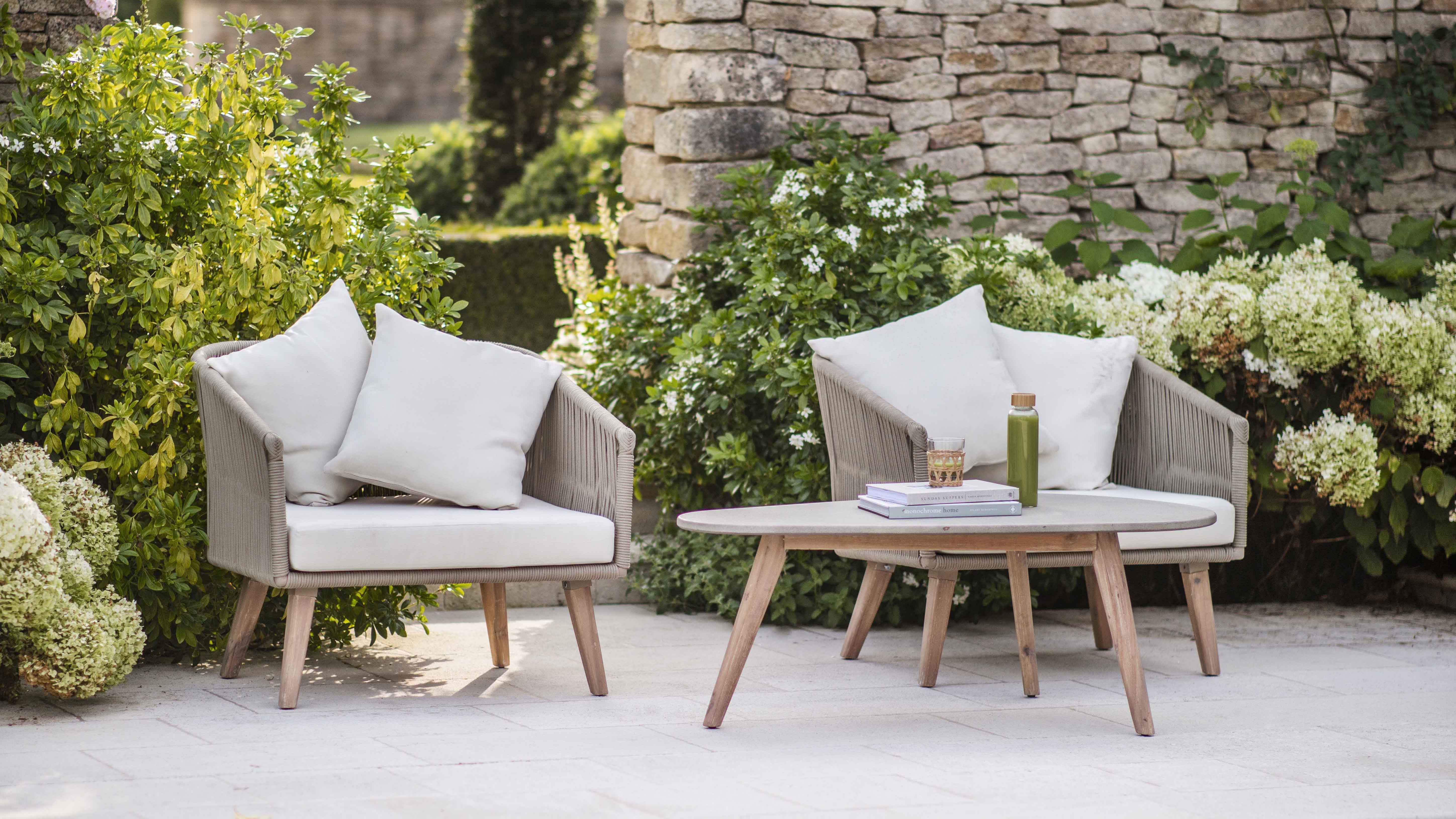

Knowing how to clean outdoor furniture properly is crucial if you want to keep your garden seating looking as good as new and your outside space ready to relax in.
And if you've recently invested in some of this year's best garden furniture knowing how to maintain and look after it properly will ensure it remains in tip-top condition for many years to come.
So whether you want to learn how to take care of your new investment or have a well-loved outdoor sofa or dining set that's in need of some TLC, we've got all the advice you need right here; from all-purpose cleaning methods for general garden furniture to more specific tips on cleaning teak, metal and stone.
Want more inspiration for your outdoor space? Make sure to explore our garden design ideas for easy ways to update your space with planting, furniture, materials, and more.
How to clean outdoor furniture: a general guide
This step-by-step guide works for all kinds of garden furniture and will ensure you get sparkling results every time.
1. Prepare your furniture for cleaning
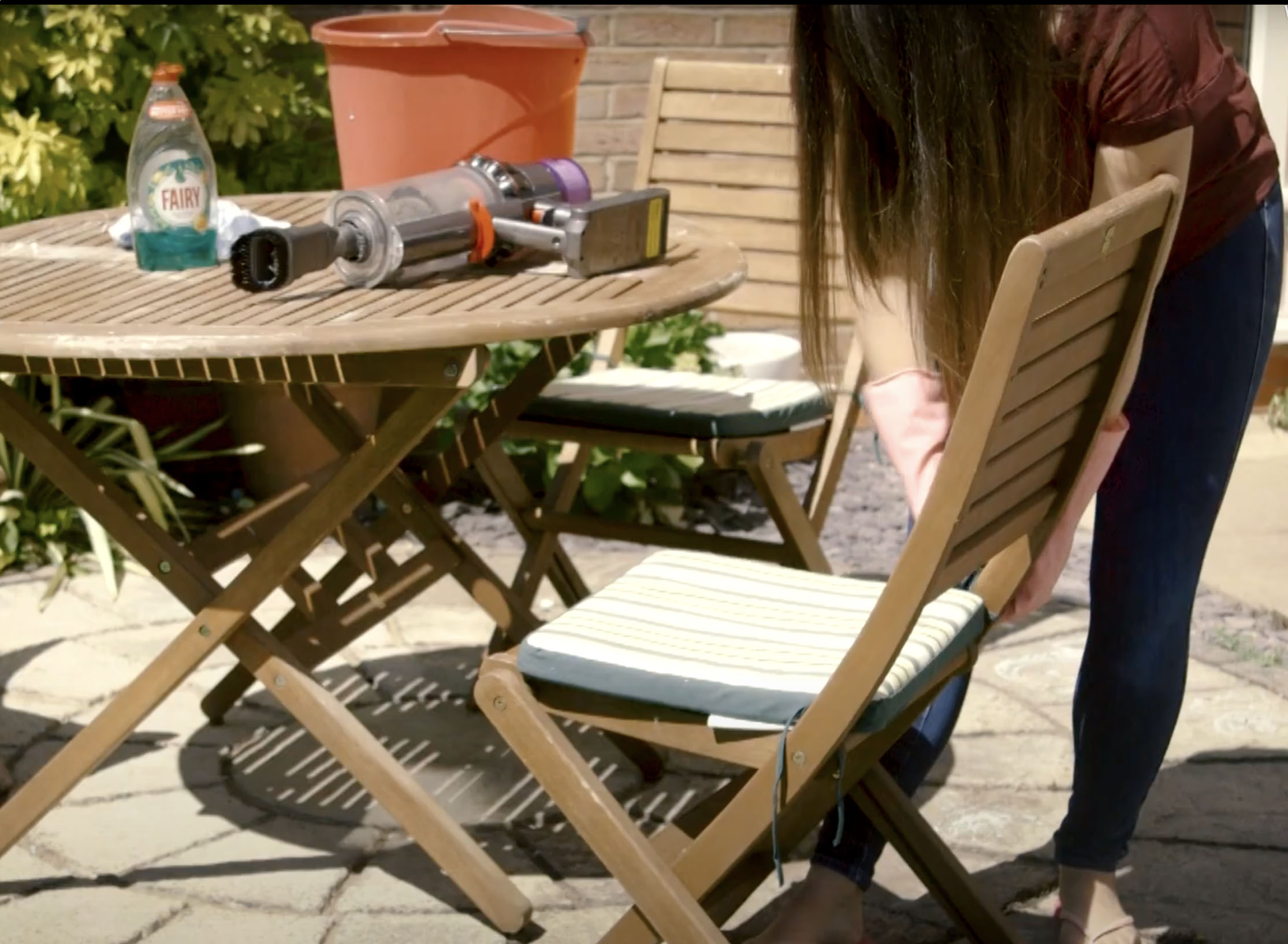
Remove outdoor cushions
Start by removing any cushions from your outdoor furniture. For removable cushion covers, pop them in your washing machine with your regular detergent for a refresh, says Ryan Schwarze, Head of Luxury Rattan. To dry, hang them outside or on your radiator. Make sure they're completely dry before placing them back on the inserts, he adds.
If your cushion covers cannot be removed for a machine wash, Ryan says to use warm water with a mild detergent to spot clean them. A soft scrubber can be used to work any stains away, before wiping with a damp cloth. Absorb excess moisture with towels before leaving to dry, he adds.
2. Get rid of loose dirt
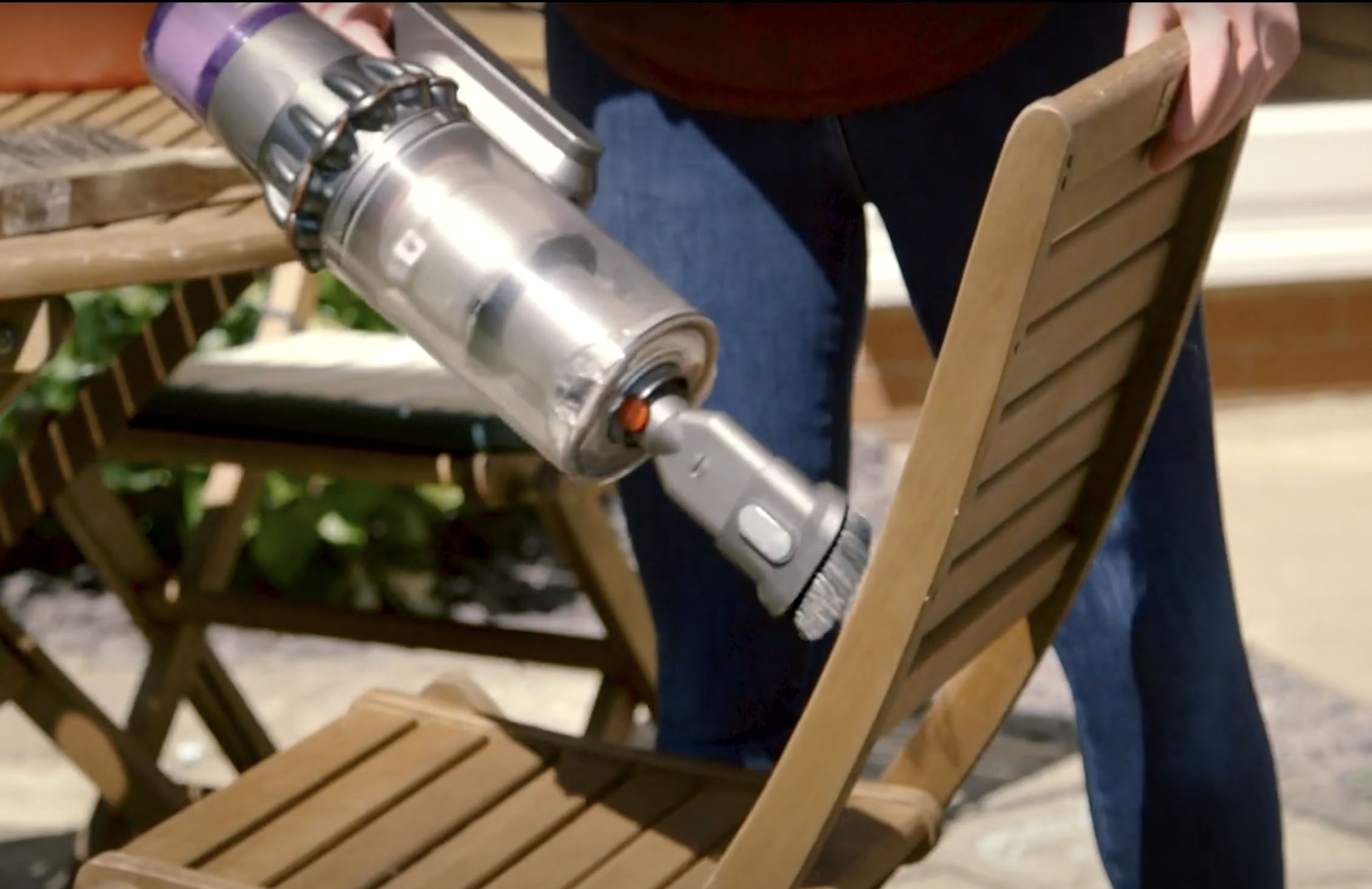
Get rid of any surface grime, dust, and cobwebs
Next, you need to get rid of any fallen leaves, muck, dust, cobwebs, or moss from the surface of your furniture. Use a brush, like the one with your dustpan and brush set, to get rid of any stuck-on debris.
If you have an extension lead or one of our best cordless vacuum cleaners that you can take outside, you should then use the brush attachment to get rid of any dust that's built up.
3. Wash with soapy water
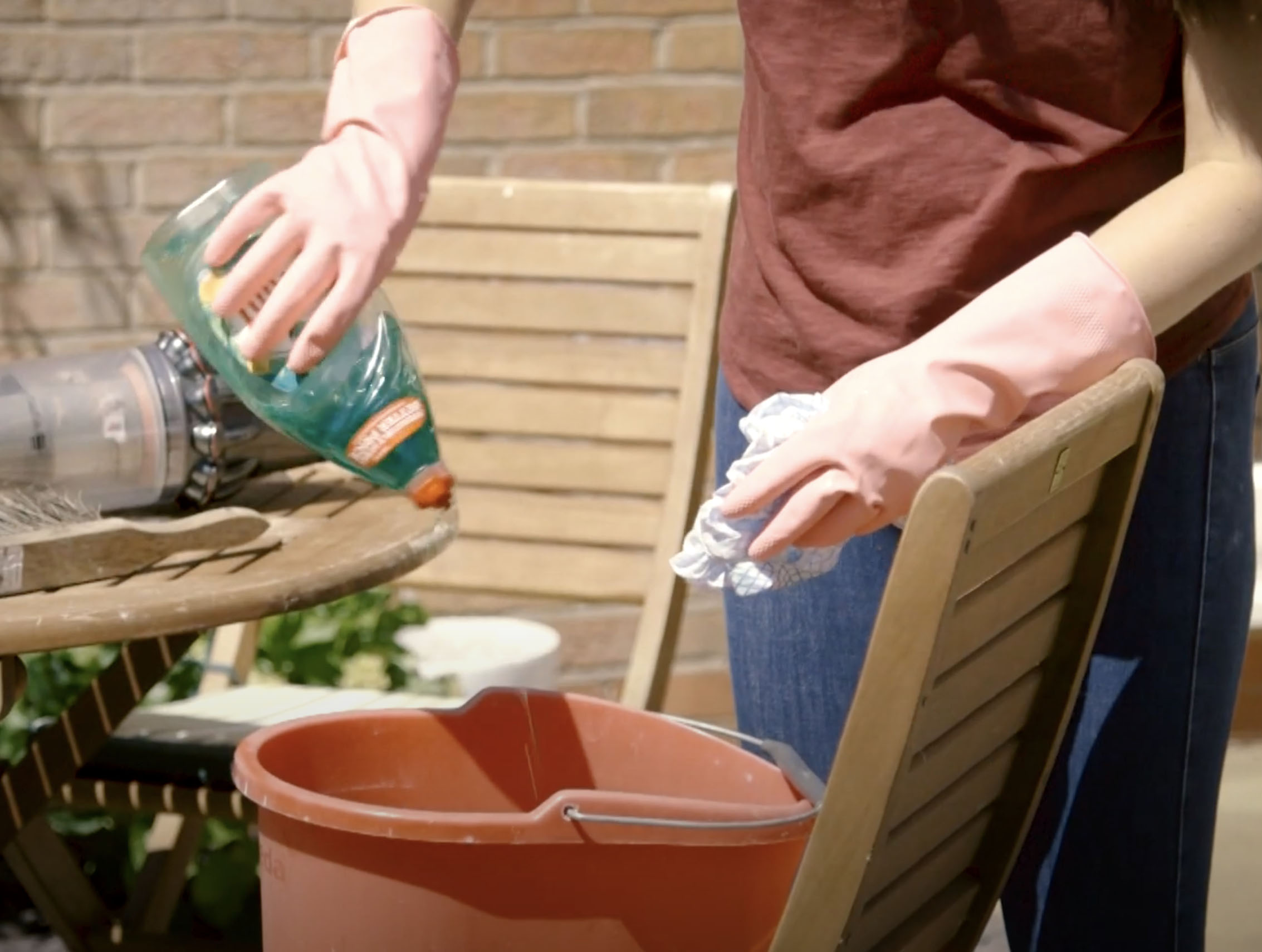
Washing up liquid and warm water makes a great solution for cleaning furniture
When it comes to cleaning outdoor furniture, 'A dash of washing up liquid is as good as anything,' says Tina Mahony, Director of Go Modern. Washing up liquid generally has a pH value of 7-8 which is considered neutral, she adds.
Start by mixing an eggcup full of washing up liquid with a bucket of warm water. Then, use a soft cloth to wipe down the furniture and allow to soak for a few minutes. Make sure you get into all those nooks and crannies. A soft toothbrush can be a useful tool to get any stubborn stains off where fabrics overlay one another.
4. Rinse with your garden hose
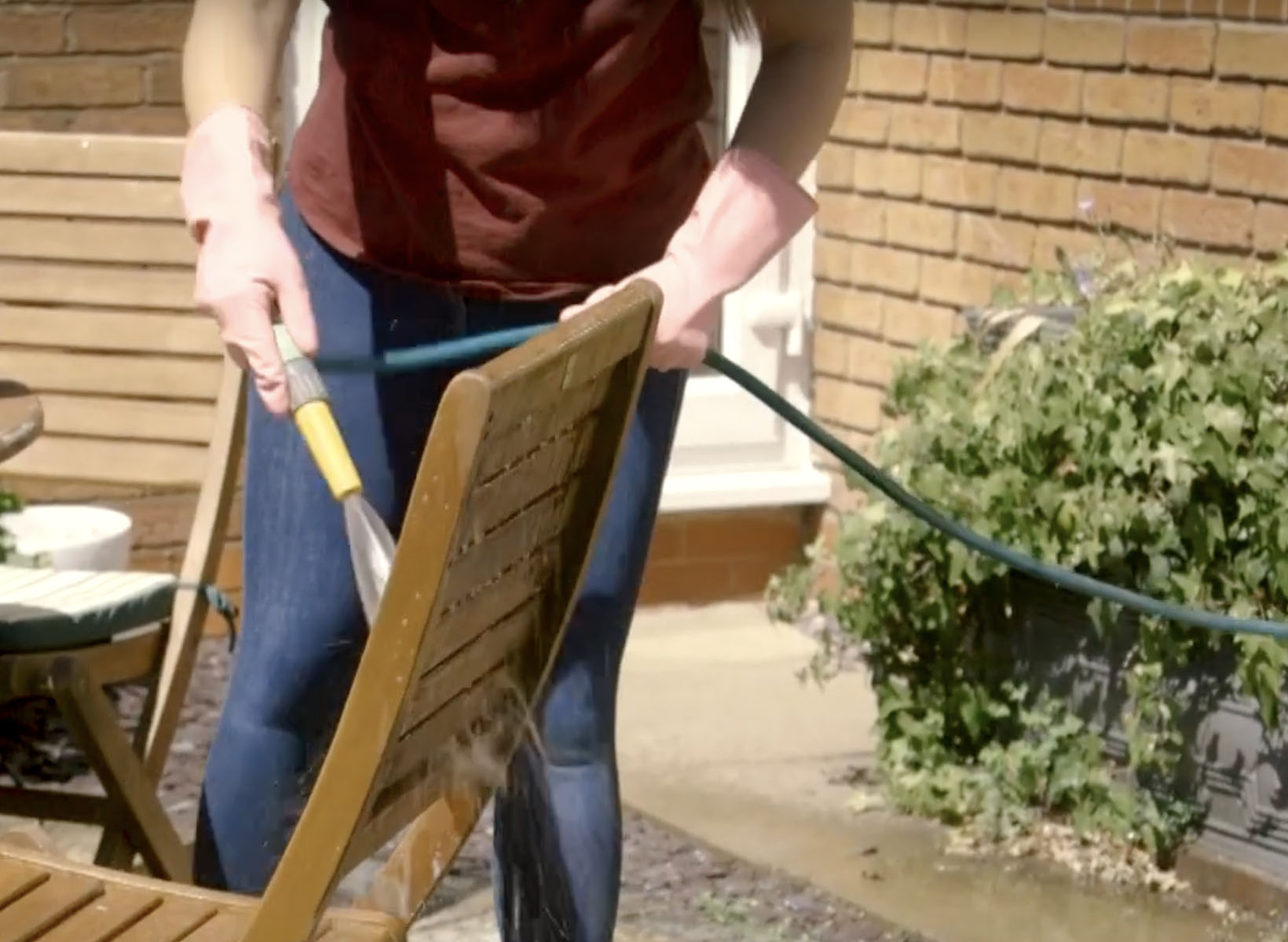
Wash away the soap suds
Next, you need to rinse all of the soap suds off of your furniture.
Although our best pressure washer is great for cleaning lots of things, from patios to cars, the top ones can be too powerful for cleaning garden furniture. So don't be tempted to reach for yours at this point. Instead, opt for a garden hose on a medium pressure setting. If it's time for an upgrade, take a look at our guide to the best garden hose for every budget.
Once all the soap is rinsed away, allow the furniture to dry thoroughly.
How do you clean plastic outdoor furniture?
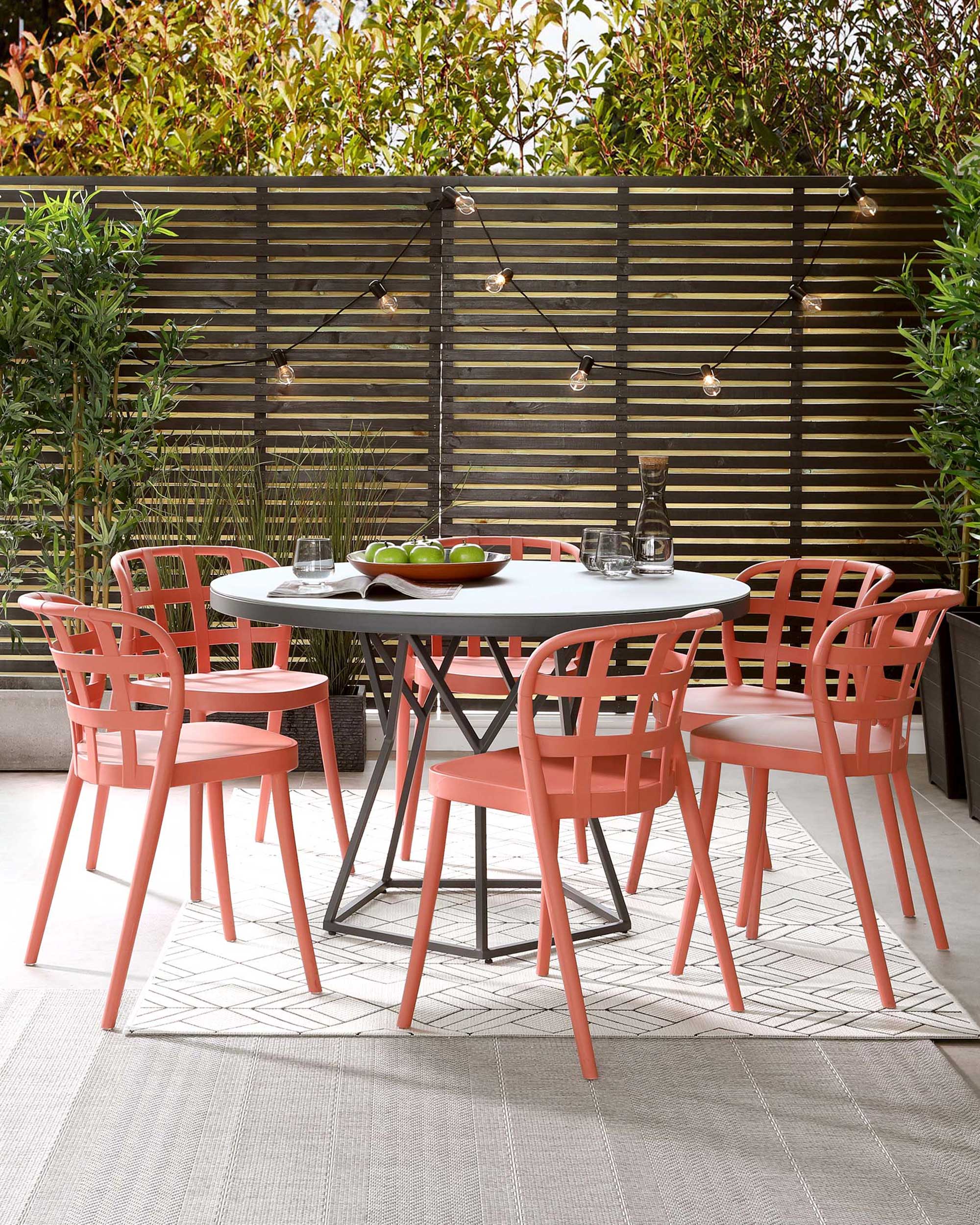
If you're wondering how to clean outdoor furniture that is plastic, then you'll be pleased to know that it's very simple.
- A gentle wipe with a cloth and warm soapy water is often all it takes to remove light marks, cobwebs or dust.
- For deeper stains, especially on white furniture, you may want to opt for a diluted bleach solution. Try a test patch first in an inconspicuous place, to check it doesn't affect the finish of your furniture. Remember to use protective clothing when using bleach – rubber gloves and safety goggles are a must.
- Don't forget to clean underneath the furniture, as well as in between cracks (an old toothbrush can come in handy for this).
- Rinse your furniture down well before allowing it to air dry. If you've used bleach, be careful not to rinse the diluted bleach onto an area where it might do harm, for instance, onto a lawn.
- Once it is nearly dry, try using a soft cloth to give it a final wipe down – this will help to prevent water spots.
How do you clean metal outdoor furniture?
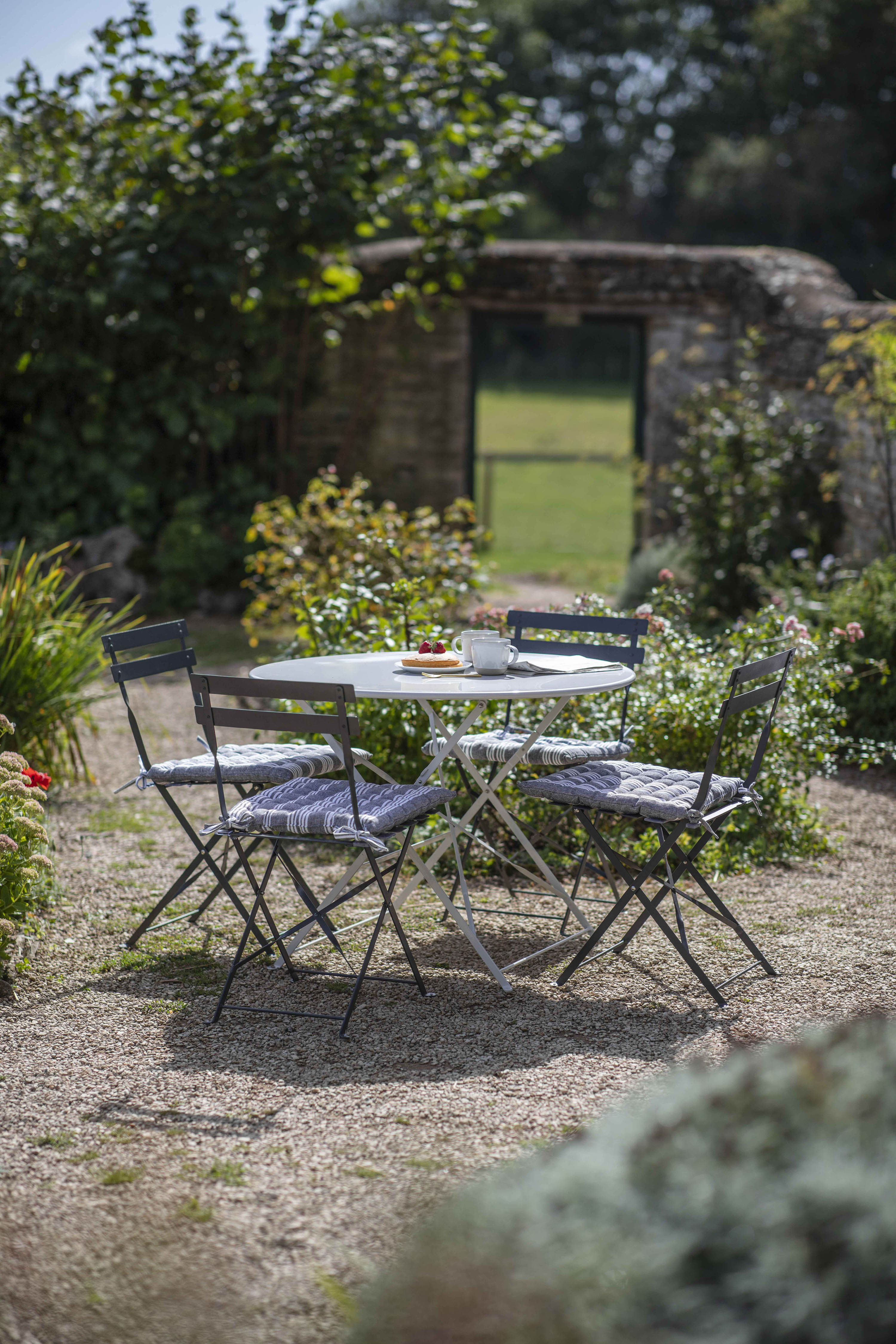
Aside from soap and water, you can find more specialist products to get your metal outdoor furniture looking as good as new. Tina Mahony, Director of Go Modern shares her tips:
- Specialist cleaning waxes will both clean and protect furniture made from aluminium and stainless steel. Some stainless-steel waxes can also remove superficial oxidation deposits and prevent any future spots.
- Aluminium and stainless-steel furniture should have been powder-coated by the manufacturer to give it long-lasting weather resistance. But, for the odd scratch or abrasion you can get 'corrector' pens, with quick-drying liquid paint that will repair any damage (opt for solvent free). Check if these can be supplied when you purchase your furniture, to find a perfect color match.
How do you clean synthetic rattan outdoor furniture?
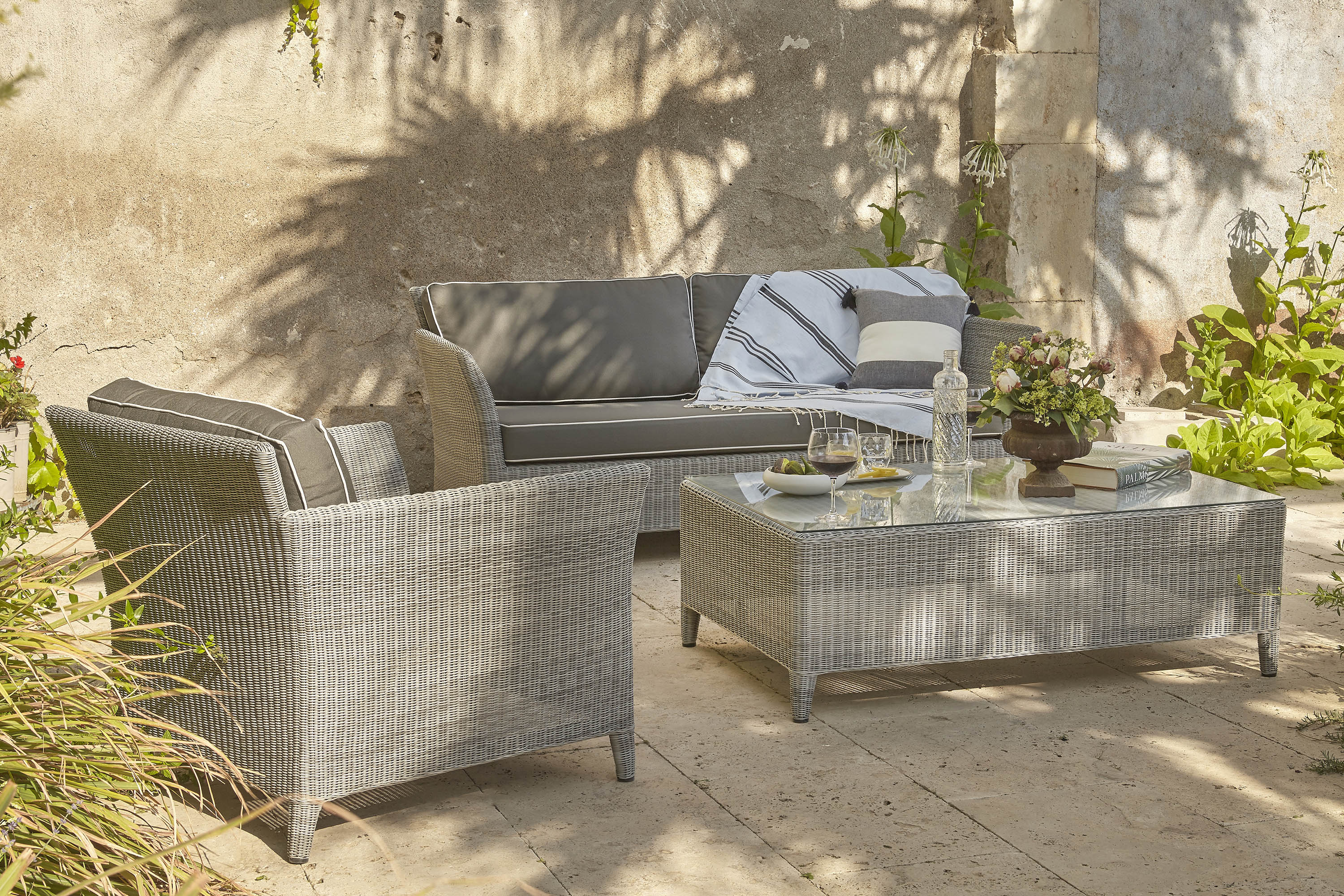
Outdoor rattan furniture is all the rage, and easy to clean. We love this set from Domaine & Demeure
As the team at Homebase explains, this on-trend material is UV and weather resistant, so won't need much maintenance. However, to get it looking its best, follow these tips below:
- Simply wash your synthetic rattan furniture with soapy water, says Homebase. The Home Depot adds that it's a good idea to use a very soft brush or cloth to do so, to prevent spoiling the finish or the fray of the weave.
- However, if there's a metal frame underneath, you might need to give it a bit more attention, Homebase adds. If it's made of steel, you'll need to check for scratches and treat them, to prevent rust (see how to clean metal outdoor furniture, above).
How do you clean an outdoor rug?
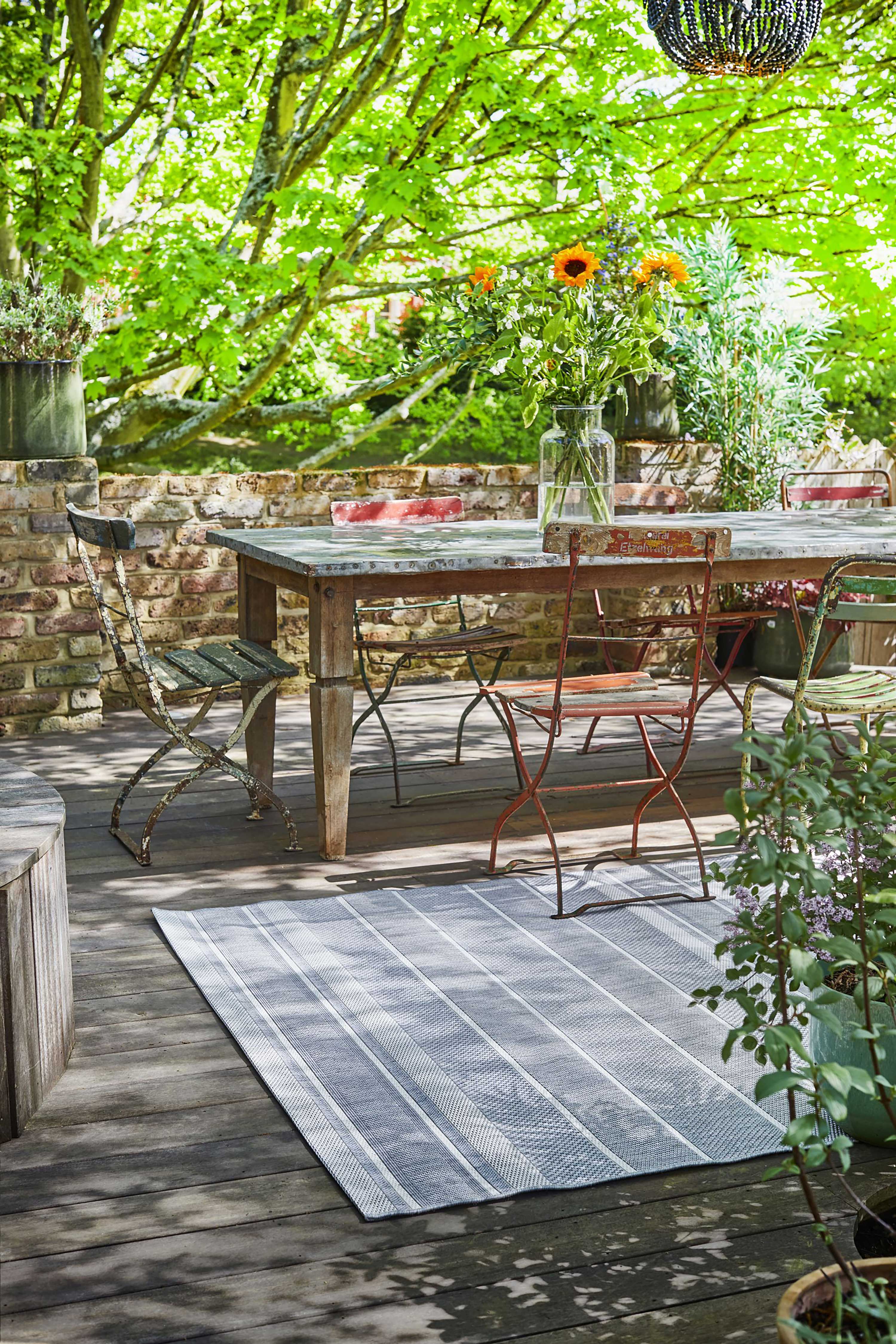
Set-up from Carpetright
The best outdoor rugs are a wonderful way to create a cozy indoor-outdoor vibe. And, when it comes to giving them a clean, Tina Mahony of Go Modern says that they can be treated much the same as indoor ones.
- Vacuum regularly but also, unlike indoor rugs, you can simply hose them down, Tina says. Depending on the material you could use your pressure washer here – but do check the label first to avoid damage.
- Any stubborn stains should be treated with a rug cleaner or taken to a specialist dry-cleaner if necessary.
How should you clean stone outdoor furniture?
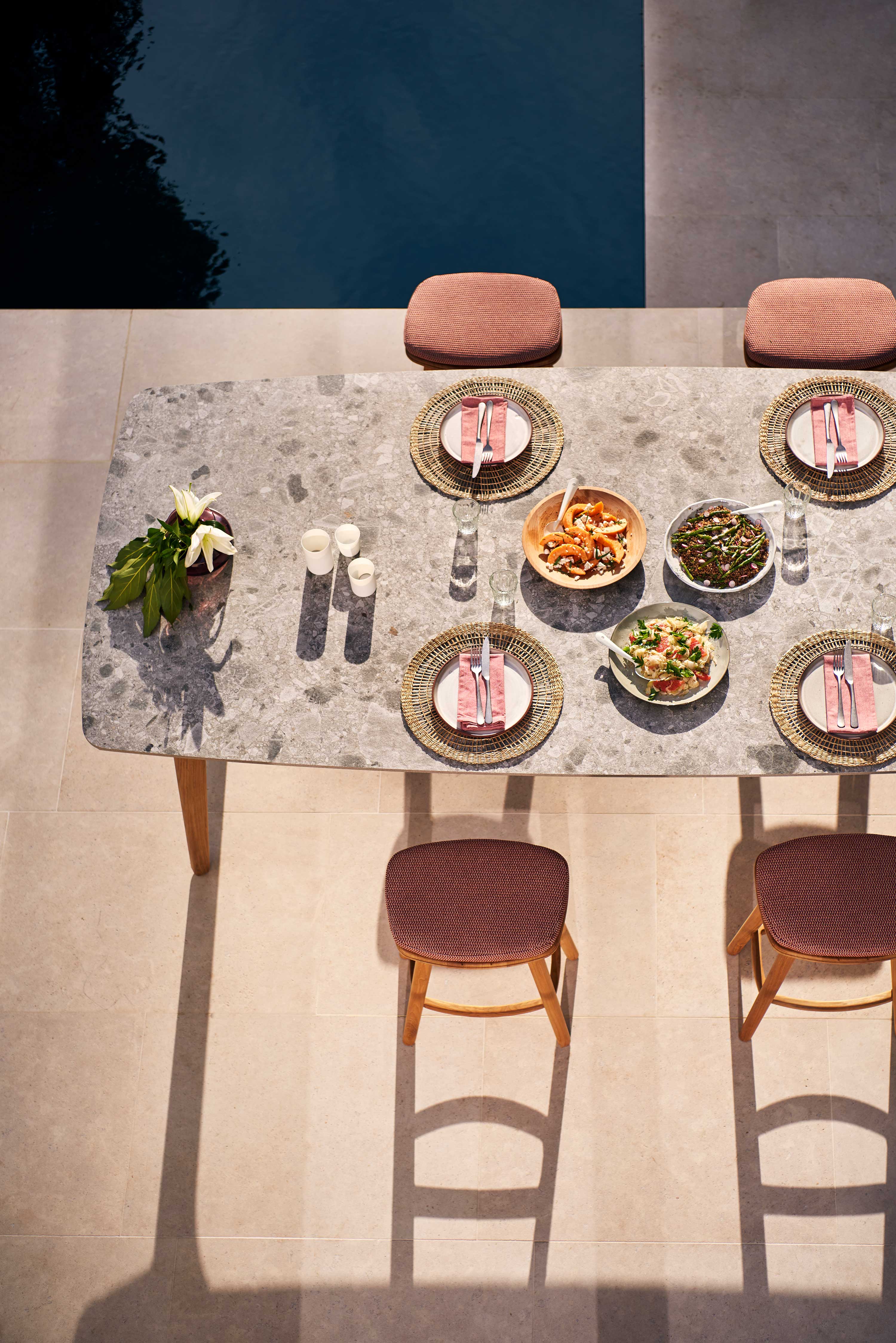
Stone table tops are a gorgeous addition to garden table ideas or even outdoor kitchen ideas. However, when dining or cooking alfresco, the odd spill of red wine or smear of oil is inevitable.
Tina Mahony, Director of Go Modern says not to panic – instead, stock up on stone cleaners, protectors and refreshers when you purchase the table, so you'll have them to hand when spillages occur. As with any stains, the faster you act, the easier they are to get rid of, she adds.
- Soak the area with water.
- Use a nylon-bristled brush and a pH neutral cleansing detergent to gently scrub at the stain. Don't use anything that's acid-based (this includes vinegar and citrus oils), or is abrasive or ammonia-based as this can damage the finish of the stone.
- Rinse with clean water – try to avoid letting dirty water run over clean areas of stone.
- Use a fresh cloth to help dry your furniture.
- Try coating your furniture with a stone sealant to give it extra protection from future stains.
How should you clean teak outdoor furniture?
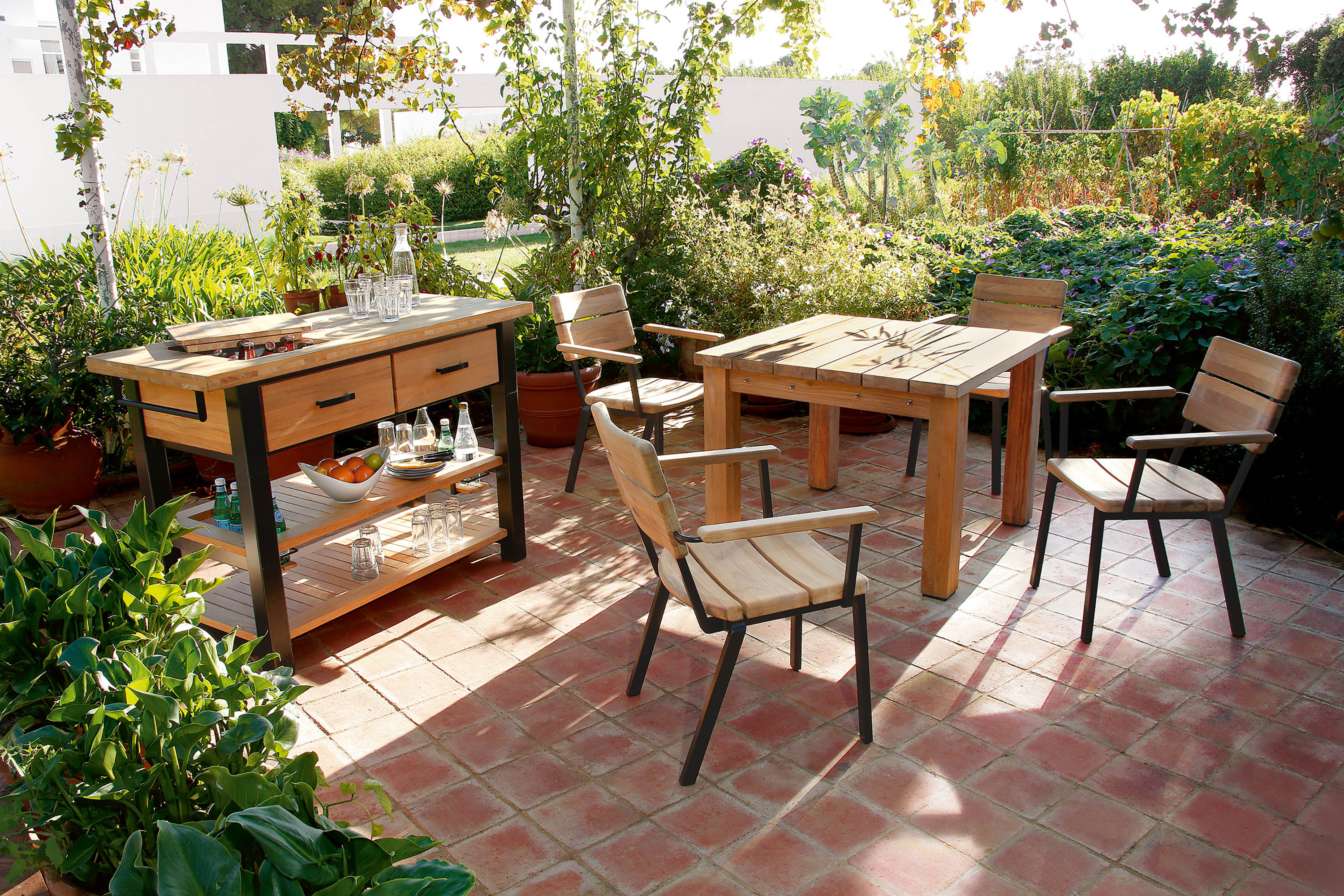
Teak is one of the most popular materials to use for wooden furniture. As Tina Mahony of Go Modern says, it should last a generation and more, and requires very little cleaning.
Over time, it can start to go silvery-grey. Lots of people find this color attractive and it can add a rustic charm to a space – perfect if you love our cottage garden ideas. But if you'd prefer to keep it closer to its original hue, you can use a specialist cleaner and stain protector with a color restorer, as suggests Tina. You'll quickly have it back to its original warm earthy teak tones.
Stubborn stains can also be lightly sanded, she adds, but always sand (and clean) in the direction of the grain.
For more tips on how to clean wooden outdoor furniture, head over to our guide.
How should you store outdoor furniture?
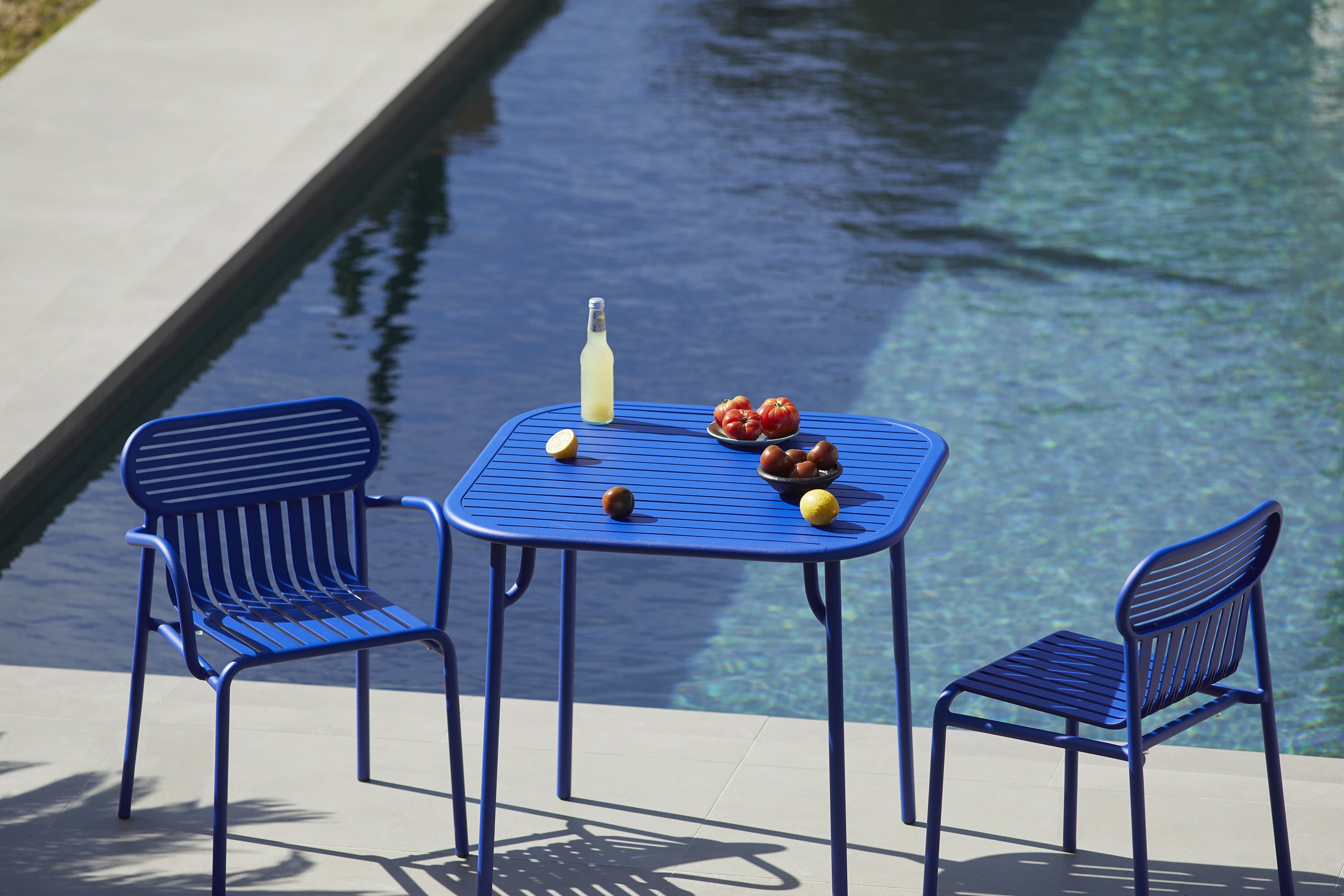
Store your outdoor furniture indoors during winter months – even waterproof garden furniture is only designed to be left outside in showers.
- Move your furniture into a dry shed or garage over winter.
- If you don't have an indoor space big enough to store your furniture, opt for furniture covers instead. Look for ones that are close-fitting, stain-proof, and water and mould repellent, with 'breathable' fabric and ties, advises Tina Mahony of Go Modern.
- Most good retailers will sell furniture covers alongside the product, but you can also take a look at our best outdoor furniture covers buying guide, or head to somewhere like Amazon and use rope or bungee cords to tie them down.
How often should you clean outdoor furniture?
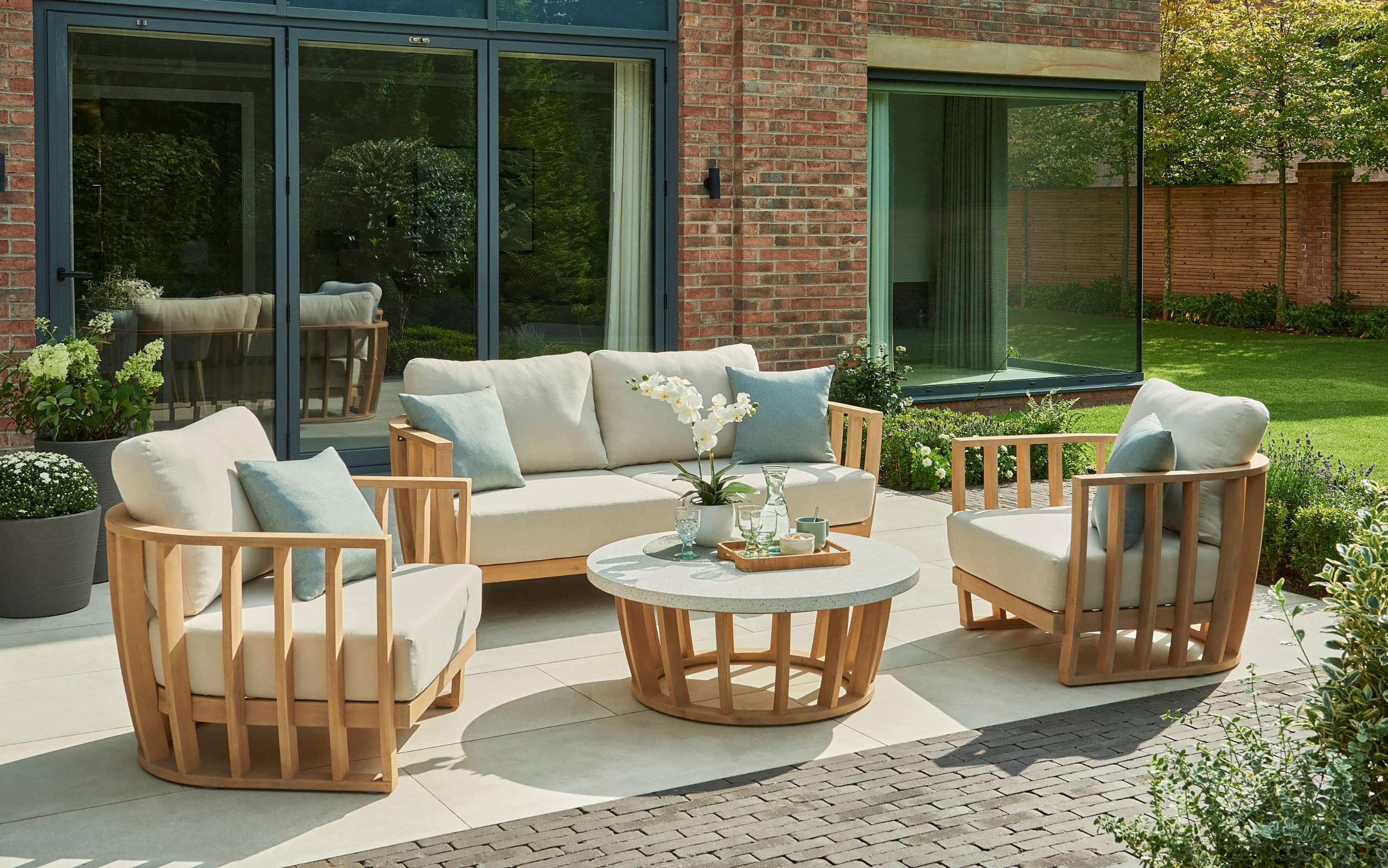
We'd generally recommend giving your outdoor furniture a clean using the steps above twice a year. Clean it once as part of your spring garden ideas, when you uncover it for the first time to wash off any cobwebs or debris, and then again before you put it back into storage in autumn.
However, if you're using covers for storage, make sure the furniture is completely dry first – as trapping in moisture can cause damage and encourage mould. In fact, for wooden furniture, it's often better to only clean them in spring to avoid this risk, adds Tina Mahony, Director of Go Modern.
Laura has been writing about homes and gardens for 17 years. She joined Real Homes magazine in 2015 as Deputy Editor and then become Editor before taking on her current position as Content Director for brands including Country Homes & Interiors, 25 Beautiful Homes, Period Living and Style at Home. She's currently redesigning the garden of her 1960s home in Worcestershire and will eventually reinstate the swimming pool that's currently filled with mud! Outside of homes, she's a TV presenter for QVC.
